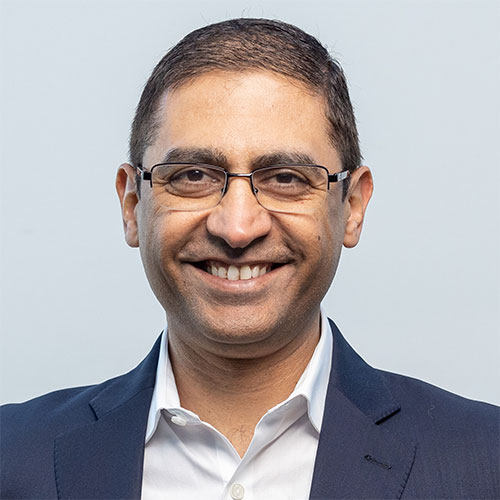Insights
The healthcare landscape is a hotbed of activity. Amid the familiar discourse around healthcare affordability, access, and patient care, a new revolution is knocking at the doors. The rallying call for patient centricity and price transparency has highlighted the need for change in the current healthcare landscape that is not just a little trim around the edges. If done right, McKinsey predicts a trillion-dollar opportunity to transform care delivery.
We stand at the precipice of a new era for healthcare—one that is collaborative, digitized, accelerated, and fundamentally human-centric. So, what does this digitally led future of healthcare look like? And what are some of the areas that will shape the new narrative in healthcare?
Five priorities for the healthcare industry
1. Human at the center: Patient centricity and personalized care
Netflix's meteoric rise stemmed from its ability to crunch massive volumes of data and deploy AI/ML models to deliver tailored recommendations to every user. Is it time to build the Netflix of healthcare?
One of the most significant shifts in healthcare has been triggered by the change in the outlook from disease management to preventive health. As people assume a more active role in managing their health and well-being, patient centricity has come into sharp focus. Indeed, it is one of the biggest challenges that payers, providers, and med-tech are trying to solve.
- How can we empower the patient to make better decisions about their health?
- What would it take to hyper-personalize treatment plans and provide precision medicine with proactive health support?
- How do we enable Value-Based Care (VBC) to deliver high-quality care at lower costs?
- How do we build a healthcare system where preventing disease would be more profitable than treating one
These are the questions leading industry minds are asking, not only because it's good for the patients but also because it makes economic sense.
The next phase of healthcare transformation is all about convenient, transparent, and personalized care attuned to individualized needs. To deliver on this healthcare utopia, we need a nitrous oxide boost called digital transformation.
2. Enter the Matrix: A Connected Healthcare Ecosystem
The financial industry has proven how powerful interconnected systems can be. Fintech startups have leveraged open banking to access a broad array of financial data, driving innovative solutions like personalized investment recommendations and rapid loan approvals. What if we could drive similar, life-saving outcomes in healthcare? Estonia has done it with outstanding success. They've created fantastic, connected health ecosystems as early as 2016 by linking patient data from doctors, hospitals and insurers.
The US healthcare space is ripe for connected ecosystems, and patients are already demanding the ease and convenience they are used to in other areas of life. New competitors, tech advancements, and regulatory changes are also pushing the connected health agenda. However, the mainstay of connected health – interoperability – remains a challenge for the US healthcare system. While the technology for secure, cost-effective data-sharing solutions exists, the adoption has been slow.
In the coming years, creating an underlying data fabric – to create permissioned, real-time access - will be key to building connected health ecosystems that can drive better patient outcomes and reduce costs for the entire system.
Article
Humanizing Healthcare | Learn about building an accessible consumer-centric ecosystem.
3. House Calls 2.0: Virtual Hospitals
Remember the good old days when doctors did house calls? Well, they're back and better than ever. Covid-19, while a menace in itself, turbocharged the telehealth market into an impressive $250 billion industry. The US Veteran Affairs' Anywhere-to-Anywhere initiative has set a sterling example, demonstrating that healthcare isn't a location; it's a service.
Patients, of course, prefer virtual consultations to long wait times in the clinics, and this preference is a key driver in virtual health adoption by providers. The explosion of virtual delivery models is timely, as the US is projected to face a severe shortage of clinical staff in the coming years.
Virtual hospitals are not only a solution for overburdened health systems, affordability, and accessibility but can also transform the quality of life for patients with chronic conditions and morbidities. The technology needed to make virtual hospitals mainstream is already available; the question is, how quickly will providers leverage it?
4. Drug Development at Warp Speed
It takes decades and billions of dollars to develop a new drug was an accepted industry fact. Then Covid-19, a global tragedy, pulled off an impressive magic trick – it collapsed time. The drug development cycle, once a marathon, transformed into a 100-meter dash, delivering vaccines in record time.
But how did we achieve this warp speed? The answer lies in Artificial Intelligence’s (AI) phenomenal capabilities to predict, simulate, and experiment with potential drug behavior at a rapid pace. Adding Generative AI to the mix has only expanded the possibilities, and many companies like Insilico Medicine are already using generative models to predict new drug candidates, design and optimize molecular structures, and analyze large datasets. These strides are impressive and must now be applied to all aspects of drug development.
5. The Technology Table Stakes: Cloud, Automation, AI
Healthcare players need to bring their house in order to drive digital transformation at scale. Cloud, automation, and AI have a massive potential to revolutionize healthcare. For instance, Cloud can make healthcare's massive data volumes available on demand, facilitating informed decision-making and paving the way for personalized care. Automation can take over repetitive tasks - appointment scheduling, billing, and even medication management, freeing healthcare professionals to focus on what truly matters - patient health. And AI use cases range from enhancing diagnostics with machine learning algorithms, enabling early disease detection with predictive analytics, to revolutionizing patient interaction with natural language processing.
However, implementing these technologies isn't as simple as slotting a new component into an existing machine. The prevalent piecemeal approach to technology adoption - plugging leaks as they appear - isn't going to cut it in this era of connected care. It's time for a comprehensive, integrated approach.
Into the realm of transformation
Channeling the prophetic words of Thomas Edison, "The doctor of the future will give no medicine but will interest his patients in the care of the human frame, in diet, and in the cause and prevention of disease." That future is knocking at our doors right now, demanding to be realized.
Technology is ready to fuel a paradigm-altering leap in patient care; however, true transformation will require an architectural overhaul. To build a cohesive, interoperable system that's primed for the future, healthcare players need to go all-in – move away from standalone solutions to interwoven threads of cutting-edge tech in the fabric of healthcare. The question is, are you ready for it?







.png?width=1920&height=1080&name=Consulting2_Menu_1%20(1).png)















































.webp?width=400&height=400&name=The%20future%20of%20Healthcare%20(1).webp)








